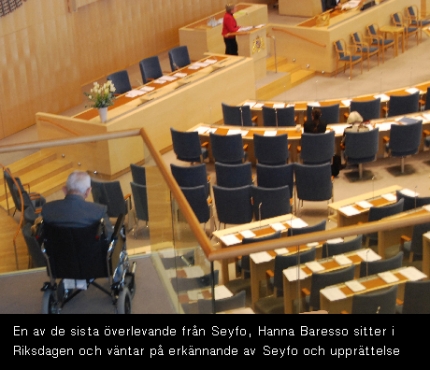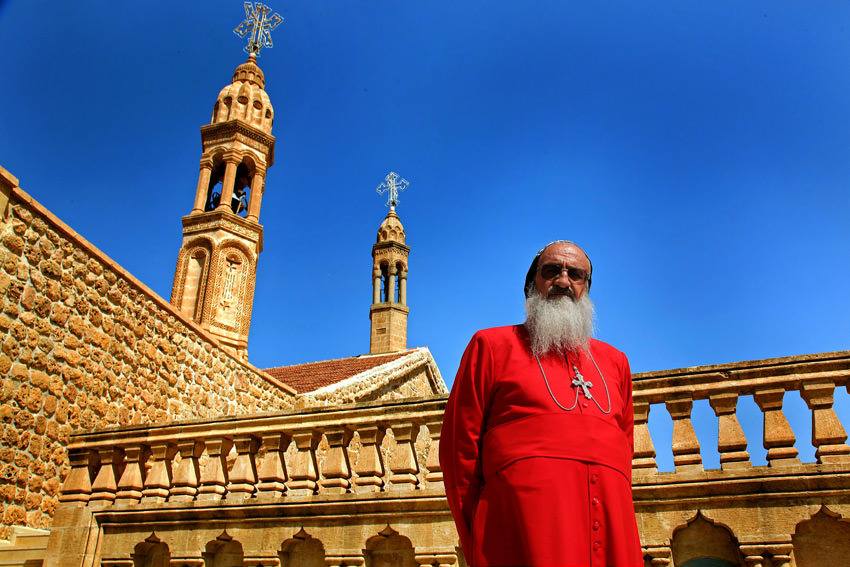During last year’s commemoration of the 1915 Seyfo Genocide, the Assyrians living in Armenia conducted a campaign solely devoted to express their solidarity with the Armenian people and to talk about their own tragedy.
The Armenians and Assyrians went through this damned genocide which killed 1,500,000 Armenians and over 750,000 Assyrians. I have decided to talk to the Armenian people in their own language, to talk about their problems, which they share with Assyrians. How did this play emerge? This is just a simple dialog – between an Assyrian and the Armenian.
When I was writing this play, I never thought that it would end up in such a large campaign. There is just a few people these days who know that Assyrians were the foundation of the civilization, created written language and one of the wonders of the world… Assyrians also propagated Christianity in Armenia: Akop Mzmnetsi, Grigoriy the Enlightener’s brother-in-arms and one of the most active preachers of God’s Word in Armenia, was an Assyrian,” – says Razmik Khosroev, an actor at the Sundukyan National Theater and a member of the Coordinating Council of Minorities under the President of Armenia.
Artashat’s Theater had not witnessed a full house as this for a long time. Armenians, Assyrians, Jews, Ukrainians, Russians and Kurds came to see and listen to the story which is taking place in today’s Iraq and at the same time touch the deepest roots of the history of the mankind.
The events unfold in Mosul, Iraq, on the ruins of the temple of the ancient Nineveh, the former capital of the Assyrian Kingdom. The play is focused on the Assyrian woman – Semira (played by N. Avetisyan), who receives her education in England and is obsessed with an idea of reviving the Assyrian State System and the Assyrian ancient culture. The echoes of this culture are scattered around the outline of the play: in the setting, folklore dancing, national songs that are strange and attractive, at the same time, for the unaccustomed ear, in the scenes of the epic of Gilgamesh, which are performed at the foot of the temple by Semira and Nimrod – an Assyrian and an officer of the British Army (played by the actor of the National Theatre, Artashes Aleksanyan).
The melodies of the national songs are interrupted by the sound of cannons: there is a war in Iraq still bringing destruction to the people and to the great culture created by Assyrians.
“Despite of all the promises made by the authorities, the museum of the Assyro-Babylonian culture was looted in the matter of just five days…”
- “The Christian Church was bombed yesterday, as a result of which ten Armenians and twenty Assyrians died…”
- “Armenians managed to regain their State system, but the Assyrian people are still undergoing genocide…”
Fred Simon, the artist-missioner (played by R.Avetisyan) is ready to give his life to save ancient cuneiforms, that disappeared from the museum and became the same victims of the genocide as the human victims. Although Lady Florence (played by G.Galstyan) and her son Fenooik (played by A.Minasyan) representing the British in the play, do not care about any of it. At all times when American and British economic interests conflict with declarations about freedom, respect to other cultures, humanism.
“Preservation of the nation is above all the preservation of its culture. The main goal of our action is to remind that Iraq, which has two million Assyrians among its population, has an ancient culture, which is being destroyed step by step. Due to the 90th anniversary of the genocide in Armenia a great number of Assyrians from different countries will be invited by the government and they will have a chance to the see the play. I believe that it will be very interesting for them, because for the first time genocide is portrayed through the language of theater. There are numerous articles, books on the Assyrian genocide, but I tried to express it through the language of theater, because I think that one play will tell more than many articles. Just look at the response “The Moon Monster” received in the world! And I am very glad that our play-action was watched by the representatives of eleven minorities that live in Armenia and everybody was deeply moved and even surprised: why they did not think of this idea before,” says Razmik Khosroev.
Artashat Theatre was especially selected to be the voice of the Assyrians in this painful matter. There are two villages in Artashat region – Dvin and Dimitrov – that are partially populated by Assyrians. There is also an Assyrian dance group that includes not only the Assyrian youth, but Armenian as well and that took part in the play.
“Assyrian Woman” exists thanks to enthusiasm of Ramzik Khosroev and the Assyrian Association of Armenia “Atour” and also the Ministry of Culture of Armenia which partially sponsored the play.
“This is the first case in the history of the Assyrians of Armenia, when our culture was taken beyond homes, families, villages and rose to the state level. We are very grateful to the Ministry, which realizes that the culture of the minorities that constitute about 3% of the country’s population is also part of Armenia’s culture,” says the author of the play.
By Sona Meloyan
(Translation from Russian by Nina Georgizova)




